Un(terdisciplinary conference): Where the Whole Is Greater than the Sum of Parts
By Joshi Atharv Abhay (Materials Science & Engineering + USP, Class of 2020)
Atharv is a student facilitator for Un(terdisciplinary + Conference).
Published: 31 October 2017
Think of a conference, and you’ll probably picture a big-budget affair with a star-studded lineup of speakers delivering talks according to a set schedule. An unconventional conference – ‘Unconference’ for short – takes this idea of a conference and flips it on its head to create something more organic. Think that an engaging full-day event is hardly possible without a big budget, list of speakers or a set agenda? Well, on 23 September 2017, a team of USP students at the National University of Singapore (NUS) successfully organised the Un(terdisciplinary conference), a participant-driven Unconference centered around the theme of ‘interdisciplinary education’. Here is an account of what happened.
‘Interdisciplinary Education’ is one of those terms that is often thrown around, often sought after but rarely understood. What does the buzzword mean? Who should be allowed to be interdisciplinary, - or is it something everyone should work towards? What intrinsic/extrinsic value does interdisciplinary education offer? In light of these questions, what is the value today of single field expertise? And what does this mean to me? A motley group of 35 students from NUS, Nanyang Technological University (NTU), Singapore University of Technology and Design (SUTD) and Yale-NUS converged at Chua Thian Poh Hall (CTPH) on a rainy Saturday morning to discuss these questions in the novel format of an Unconference. As these students belonged to interdisciplinary programmes of their respective universities, the ensuing conversations provided an opportunity for critical self-reflection as much as they were a platform for networking and exchanging knowledge.
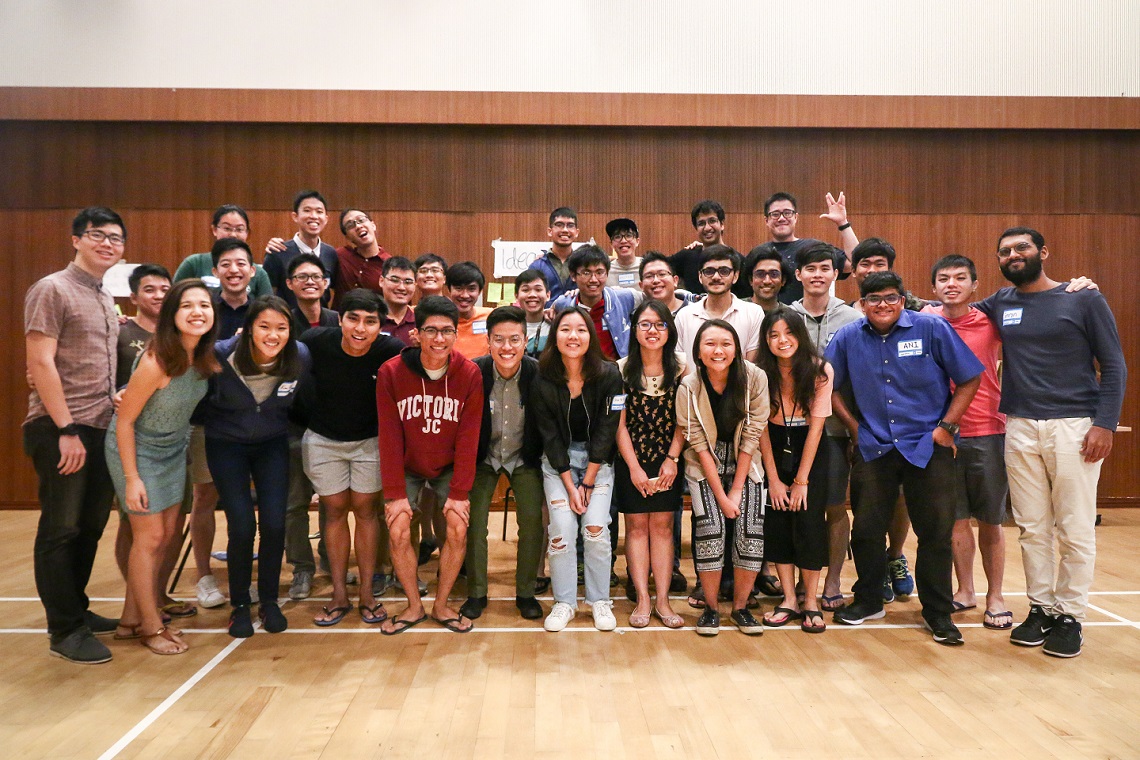
The participants who spent a whole Saturday talking about interdisciplinarity.
The Unconference kicked off with an ice-breaker activity where everyone was made to stand inside a giant map of Singapore and go to locations that housed their best-loved food, favourite view, secondary school etc. The activity got the participants moving on their feet and was so well received that one participant lamented “the duration can (sic) be longer” while another was “quite surprised this wonderful icebreaking activity isn't done more often.”
This was followed by a warm-up breakout session where two groups, each led by a facilitator, were tasked with scaling different academic disciplines on a line according to how interdisciplinary those fields were. The groups soon found out that a linear scale wasn’t sufficient to grasp the idea of interdisciplinarity well enough. One group introduced another axis, while the other ditched lines completely and went with a ‘circle of knowledge’ instead. Dou Heng from SUTD, who suggested the idea of using a circular connection, said that it could be used to judge if one discipline is more interdisciplinary than another. The organising team, who had anticipated the extra axis but not the circle, could be seen beaming with excitement as this session had clearly gotten the participants thinking out of the box, or in our case, axes.
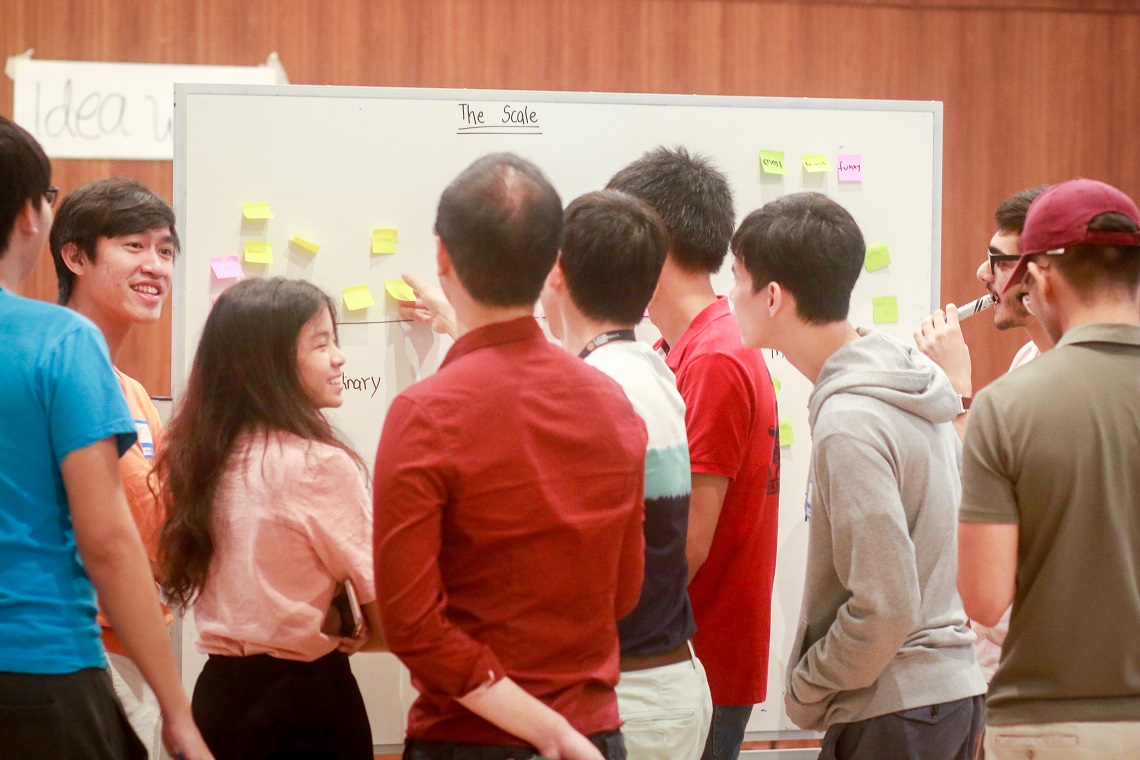
Participants seen flexing their minds as they try to make sense of Interdisciplinarity via the Scaling activity.
As mentioned earlier, an Unconference may have a theme, but it does not have a fixed agenda. To guide the ensuing discussion, participants were gathered to collectively decide the ‘rules of engagement’ (pictured below). ‘The Law of Two Feet’ and ‘The Four Ws’ (pictured below) were introduced. The law of two feet empowers everyone to simply leave and join a discussion at will, or start a new one instead. Hence, rather than constrict interaction, these rules reiterate the open nature of an Unconference by advocating a ‘go with the flow’ philosophy.
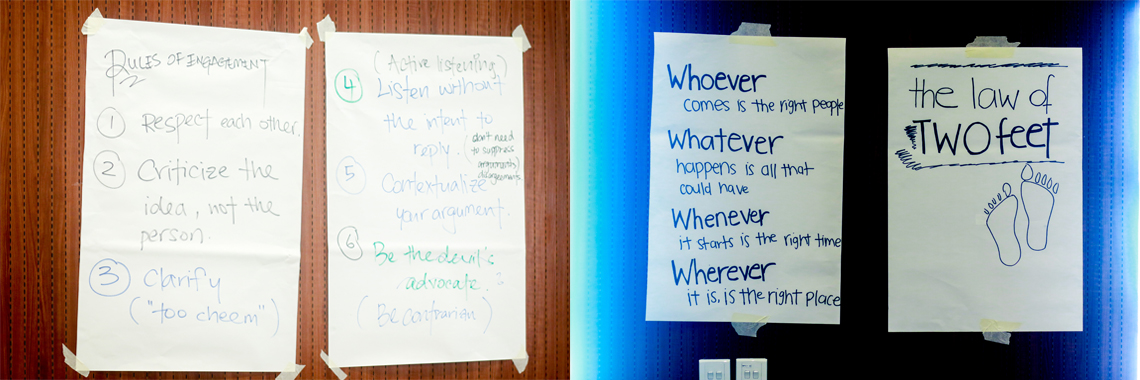
(Left) Rules of engagement, as suggested and agreed upon by all. (Right) The only rules for the Unconference.
Like the agenda, the topics and content for discussion were generated by the participants too. An Unconference is all about getting the participants’ questions, thoughts and experiences to shape the conference. A colorful idea wall (pictured below) soon emerged. As the participants took a break for lunch, the facilitators grouped these ideas (or questions) into broad themes that would be drive the main activity for the day, the ‘Souper Bowl.’
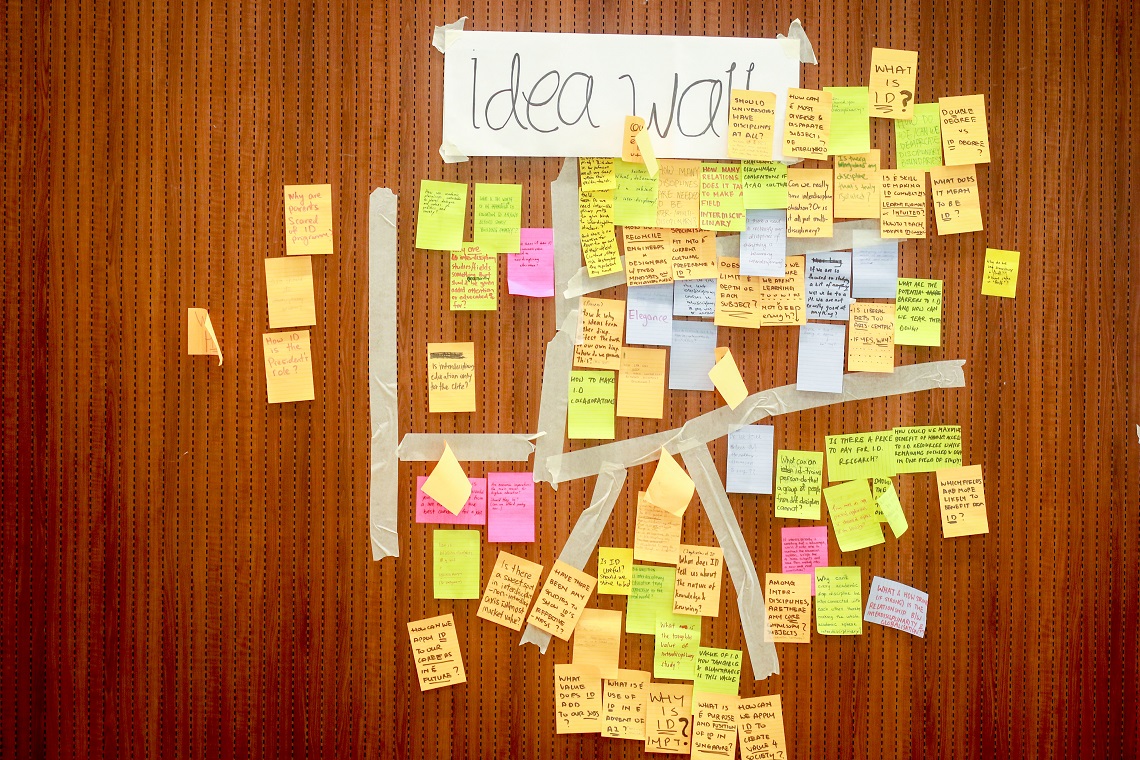
The Idea Wall
The ‘Souper Bowl’ was where the bulk of substantive discussion took place. Participants chose a ‘soup’ (a fancy name for a discussion group) from an initial platter of five, each with a specific theme. The themes focused on different aspects of interdisciplinary education, from its nature and essence, to its relevance and applicability in today’s world. Each soup had an appointed group of ‘questioners’ and ‘answerers’ who switched roles after fixed intervals of time. Questioners had to phrase their questions according to a given word (why, how, what, who) on a randomly picked ice-cream stick. Answerers could choose to answer individually, or confer and provide a group view. This format kept the participants on their toes and encouraged focused interactions between them. While the question words were intended to make the question more succinct, some participants felt that “they seemed to be an unnecessary constraint” and couldn’t see how “restricting to question words helps.” Despite feeling a little constrained, it was interesting to note how the intensity of discussions swelled as the session progressed, with the answerers eagerly wanting to get a last word in before it was time to switch roles.
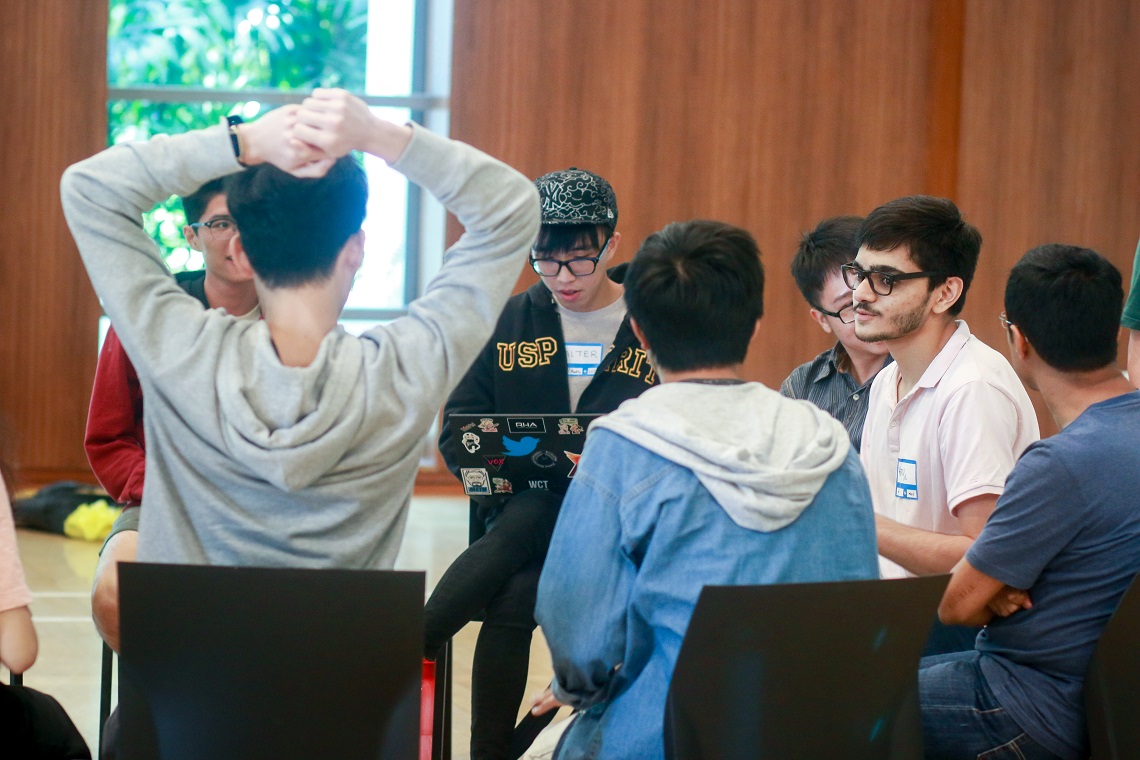
The ‘Souper Bowl’ in session
The Unconference’s only rules – the law of two feet and the 4Ws – allowed the soups to evolve in interesting ways over time. As participants moved from one soup to another and began initiating new soups, new themes such as ‘measuring interdisciplinarity’ and ‘reorganising disciplines’ that offered suggestions to rethink the outcomes and pedagogical techniques respectively, emerged. For example, one new soup also posed the question “Is entry into ID only for the elite?”, prompting some much-needed self-introspection among the participants. While others moved between soups, some chose to take a break from the intensity of the Souper Bowl to get some well-deserved rest in the relaxation corner. All these varied elements, shaped largely by the participants, together defined the Unconference.
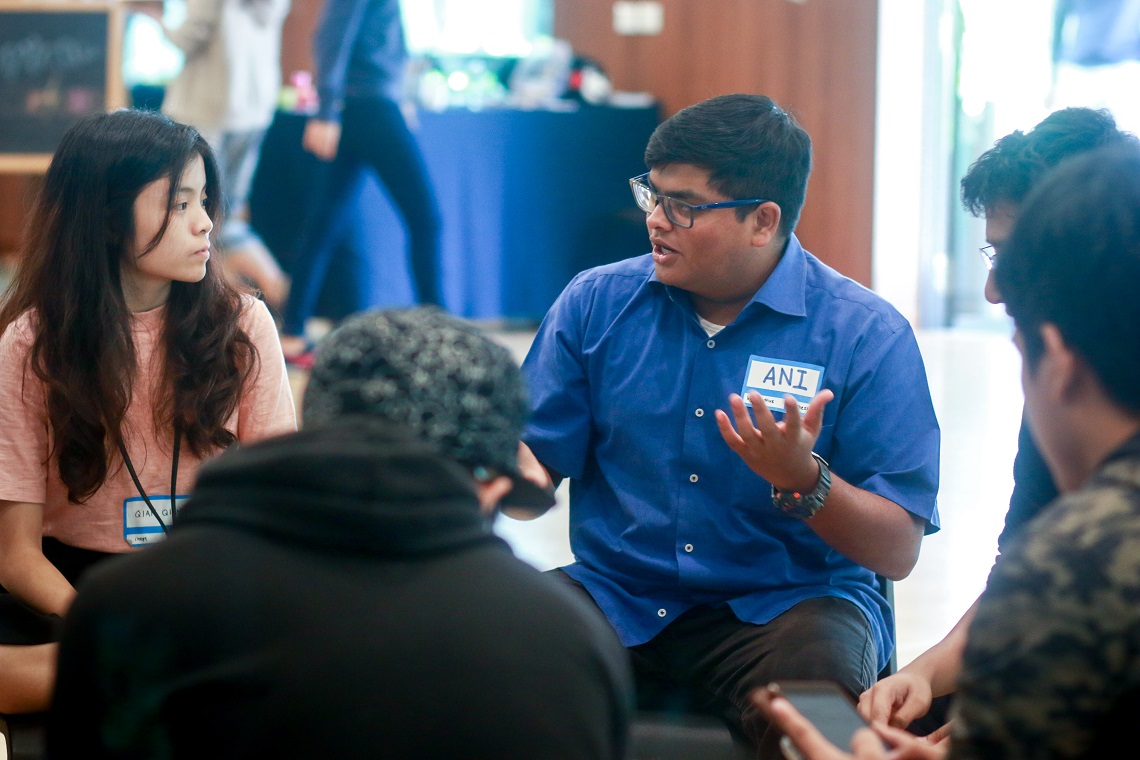
The Souper Bowl gave rise to a constantly evolving series of discussions on the different aspects of interdisciplinary education.
As the Souper Bowl wrapped up, all participants sat in a large circle and reflected silently on learning points they had taken away from the Unconference. They then met in their respective university groups to discuss their personal learning points together. Some groups pledged to take follow-up action. For instance, the group from NTU considered the possibility of hosting an Unconference at NTU USP. The Unconference may have just opened a new avenue for inter-varsity collaboration. Imran Shah (Pharmacy + USP, Class of 2018), one of the organisers, was “very excited to use an innovative format to discuss a very pertinent issue” and added “that it can be an inter-varsity event is a very happy bonus.”
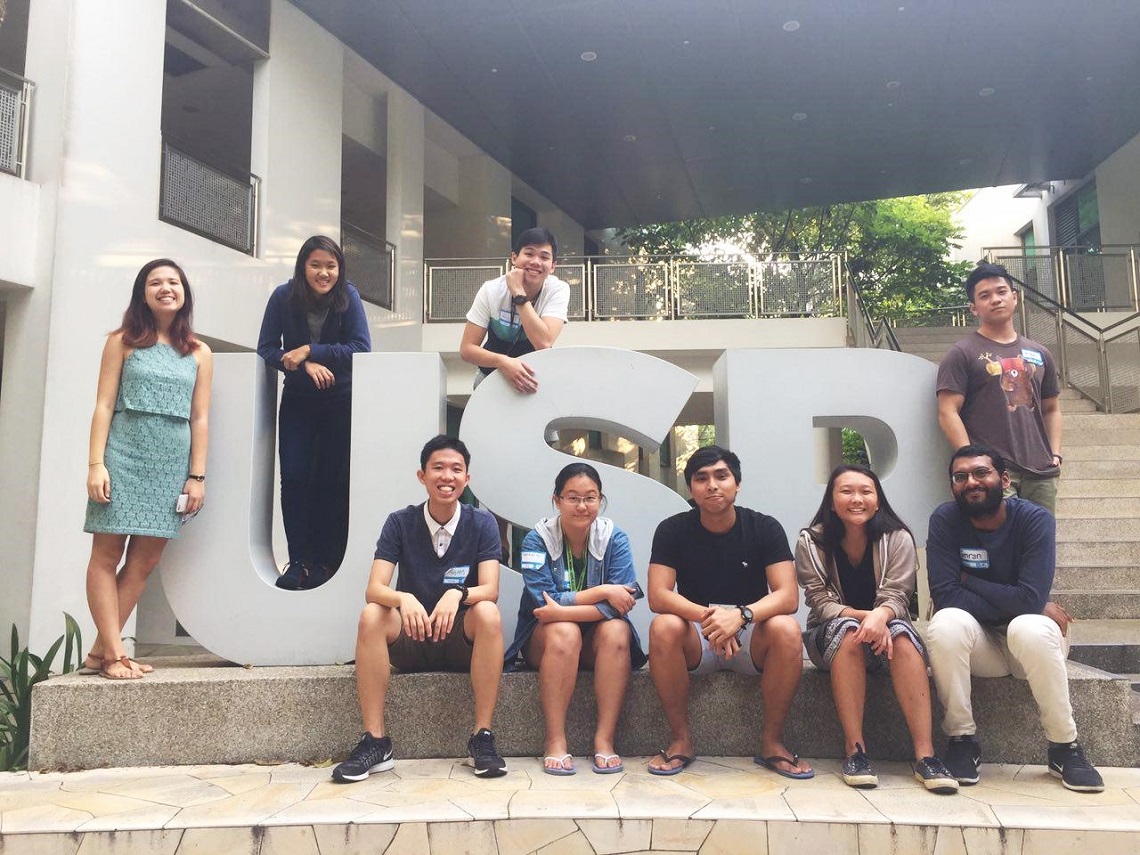
The USP organising team and facilitators of Un(terdisciplinary conference).
If you stepped into CTPH on that Saturday, you would hardly believe that a conference was in progress. The lo-fi arrangement of whiteboards, bean bags, and chairs, the scurrying of two feet between discussion circles that sprouted in and out of existence, the smooth jazz playing in the background, the smell of coffee in the air (the source of which was our resident barista Chester who had set up a free-flow coffee booth that brewed exotic flavours) – would all throw you off scent.
And yet it did — 35 interdisciplinary students engaging in intense conversations on interdisciplinary education. Even though the format was new to some participants, and there were those who found some elements of the Unconference perplexing and quirky, the general feedback (as gleaned from a post-event survey) was overwhelmingly positive. The student organisers of Un(terdisciplinary conference) hoped they have contributed a novel addition to the plethora of events in USP, one where the whole is greater than the sum of its parts and one that truly speaks to who we – at USP – are.
Join these discussions at:


